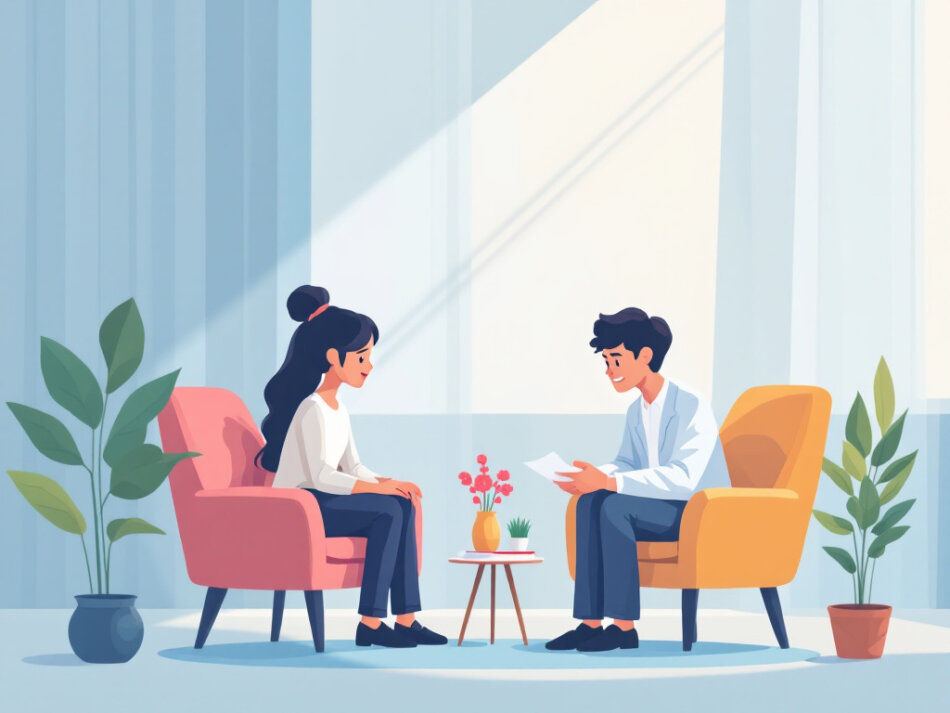Watching your teen struggle with persistent sadness, irritability, or loss of interest can be heartbreaking. You may wonder what treatment options are available that accept insurance and truly address your teen’s needs. A depression recovery program for adolescents offers a comprehensive, evidence-based path to help your teen regain emotional balance and build resilience. By combining risk assessment, psychoeducation, therapy, lifestyle management, and, when needed, medication under close psychiatric supervision, these programs can change your teen’s life for the better.
Understanding adolescent depression
Common symptoms and warning signs
Adolescents with depression often exhibit a range of emotional, behavioral, and physical symptoms. You may notice your teen:
- Expressing overwhelming sadness, hopelessness, or guilt
- Losing interest in activities they once enjoyed
- Experiencing fatigue, changes in appetite, or disrupted sleep
- Withdrawing from friends and family
- Showing irritability, anger outbursts, or increased sensitivity
- Declining academic performance or missing school
If these signs persist for more than two weeks and interfere with daily life, it’s time to seek professional help through a specialized program for teen depression treatment.
Risk factors and prevalence
Before the COVID-19 pandemic, about 13–15 percent of Canadian adolescents experienced depression, and during the pandemic nearly 1 in 4 youth reported clinically significant depressive symptoms, especially older and female teens (CMAJ). Genetic predisposition, adverse childhood experiences, bullying, social isolation, and co-occurring anxiety or mood disorders can increase risk. Understanding these factors helps you advocate for a treatment plan tailored to your teen’s unique situation.
Importance of specialized programs
Why choose a depression recovery program for adolescents
A targeted recovery program recognizes that teens face different stressors than adults. Gender, developmental stage, peer influence, and family dynamics all shape their mental health needs. In dedicated adolescent settings, licensed professionals use therapies proven effective for youth, such as cognitive behavioral therapy and interpersonal therapy, often combined with family involvement.
These programs create a safe, structured environment where your teen can learn coping skills, process emotions, and rebuild self-esteem alongside peers facing similar challenges. Whether through inpatient care, day treatment for teen depression and anxiety, or intensive outpatient programs, specialized services address the whole person rather than just symptoms.
Coverage and accessibility
Insurance coverage can vary, but many plans cover multimodal treatment for teen depression under mental health benefits. When exploring options, ask providers about in-network status and verify that services like therapy for teens that accepts insurance or specialized depression treatment that accepts insurance are included. Free, confidential screenings—offered by some programs such as Rogers Behavioral Health—can help determine the right level of care without upfront cost barriers.
Core program components
Cognitive behavioral therapy
Cognitive behavioral therapy (CBT) helps your teen identify and challenge negative thought patterns fueling depression and replace them with healthier beliefs and behaviors. Research shows CBT is the most evidence-backed psychotherapy for adolescent depression (CMAJ). In structured sessions, therapists guide teens through skill building, homework exercises, and real-world application of coping strategies to reduce relapse risk.
Interpersonal therapy and DBT
Interpersonal therapy focuses on improving communication and relationships, which can be strained by depression. Dialectical behavior therapy (DBT) adds emotion-regulation skills, mindfulness, and distress tolerance. Programs offering cbt and dbt therapy for teens help your teen manage intense emotions, navigate conflicts, and strengthen social support.
Family therapy and support
Family dynamics play a critical role in adolescent mental health. Clinician-led family support programs that combine instructional, informational, emotional, advocacy, and instrumental support have proven most effective in improving caregiver wellbeing and reducing teen depression (Adolescent Health, Medicine and Therapeutics). Involving parents or guardians in therapy sessions enhances understanding, improves communication at home, and equips families with strategies to support long-term recovery.
Levels of care options
Inpatient and residential care
For teens at high risk of self-harm or with severe, treatment-resistant depression, inpatient programs provide 24/7 medical and therapeutic support in a secure setting. Residential treatment offers a less restrictive environment with structured days full of individual therapy, group sessions, skill-building activities, and family involvement. These programs, such as those at Santa Rosa Behavioral Healthcare Hospital, have shown significant improvements in emotional stability and coping skills (NorCal Behavioral Health).
Partial hospitalization and day treatment
Partial hospitalization programs (PHP) and day treatment bridge the gap between inpatient and outpatient care. Teens attend structured therapy during the day—combining individual, group, and family sessions—then return home in the evening. If you’re considering this option, explore a program for teen anxiety and stress or day treatment for teen depression and anxiety to ensure coordinated care and continuity.
Intensive outpatient programs
Intensive outpatient programs (IOP) offer flexibility for teens balancing school or other commitments. These programs typically involve three to five sessions per week, each lasting several hours. Your teen will focus on therapy, life-skills training, and peer support while maintaining a connection to home and school.
Lifestyle and self-care interventions
Physical activity and nutrition
Incorporating regular exercise and a balanced diet can support mood regulation. Although evidence for lifestyle interventions in adolescent depression is less robust than for adults, increased physical activity has been linked to reduced depressive symptoms (CMAJ). Encouraging your teen to join a team sport, go for daily walks, or try yoga can complement formal therapy.
Sleep hygiene and stress management
Poor sleep worsens mood disorders. Good sleep hygiene—consistent bedtimes, limiting screen time before sleep, and creating a relaxing bedtime routine—can improve emotional resilience. Teaching stress-management techniques such as deep breathing, progressive muscle relaxation, or mindfulness equips your teen to handle daily pressures without turning to negative coping strategies.
Selecting a program
Questions to ask providers
When evaluating options, consider:
- Is the program accredited and licensed for adolescent mental health care?
- What evidence-based therapies are offered, and who delivers them?
- How are medications managed, and is there 24/7 psychiatric support?
- What role do families play in treatment planning and follow-up?
- How does the program coordinate with your teen’s school and community resources?
Asking these questions helps you find a program that fits your teen’s clinical needs and logistical requirements.
Evaluating credentials and outcomes
Look for programs with measurable outcomes, such as remission and relapse rates. The Treatment of Adolescents with Depression Study (TADS) found a combination of fluoxetine and CBT led to 82 percent improvement and 59 percent remission by week 36, with sustained benefits at one-year follow-up (NIMH). Programs that track and share similar data demonstrate commitment to continuous improvement and transparency.
Partnering for success
Monitoring and relapse prevention
Adolescents who recover from depression need ongoing monitoring, especially during medication adjustments, due to a small risk (around 2 percent) of increased suicidal ideation in youth starting antidepressants (CMAJ). Regular check-ins with your teen’s provider, school counselors, and family therapy sessions help catch early warning signs of relapse.
Building resilience and emotional balance
Long-term success hinges on equipping your teen with tools to navigate future challenges. Encourage participation in support groups, creative outlets, and community activities. Celebrate progress and reinforce healthy coping strategies learned in treatment. Over time, your teen can develop the resilience needed to thrive academically, socially, and emotionally.
Choosing the right adolescent depression recovery and support program can transform your teen’s trajectory, offering them the skills, support, and hope they need to reclaim their life. By combining evidence-based therapies, family involvement, lifestyle adjustments, and careful monitoring, you’ll give your teen the best chance for lasting wellbeing. For more information on tailored teen care, explore our resources on teen anxiety therapy program and mood disorder treatment for teens.











